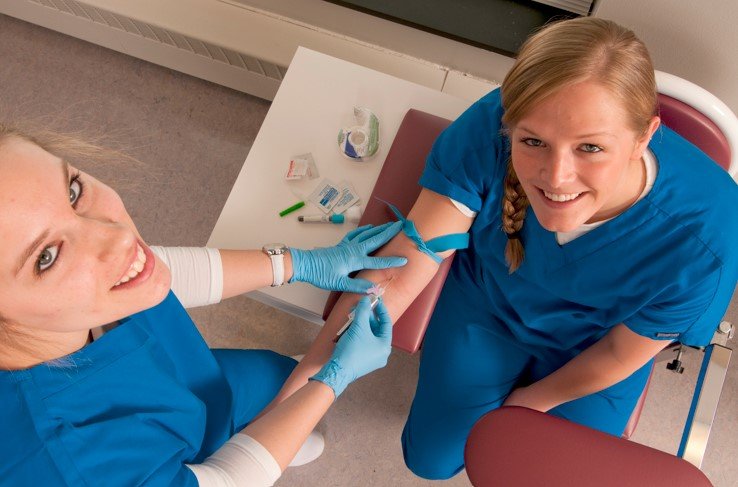Challenges in Implementing Telemedicine for Rural Healthcare Access in the United States
Summary
- Hospitals in the United States face challenges in implementing telemedicine for rural healthcare access due to limited access to technology and internet connectivity.
- Supply Chain management for telemedicine equipment poses logistical challenges for hospitals, especially in rural areas with limited resources.
- Regulatory barriers and Reimbursement issues also hinder the widespread adoption of telemedicine in rural healthcare settings.
Introduction
Telemedicine has emerged as a promising solution to improve access to healthcare services, especially in rural areas where there is a shortage of Healthcare Providers. However, hospitals in the United States face various challenges in implementing telemedicine for rural healthcare access. This article will explore the key challenges faced by hospitals in leveraging telemedicine technology to bridge the gap in healthcare access for rural communities.
Limited Access to Technology and Internet Connectivity
One of the primary challenges faced by hospitals in implementing telemedicine for rural healthcare access is the limited access to technology and internet connectivity in remote areas. Many rural communities lack the infrastructure needed to support telemedicine services, such as high-speed internet access and reliable technology devices. This digital divide hinders the ability of hospitals to provide telemedicine services to patients residing in rural areas.
Challenges:
- Lack of high-speed internet access in rural areas
- Limited availability of technology devices for telemedicine consultations
- Inadequate infrastructure to support telemedicine services
Logistical Challenges in Supply Chain Management
Another significant challenge for hospitals in implementing telemedicine for rural healthcare access is the logistical issues related to Supply Chain management. Acquiring and maintaining telemedicine equipment such as video conferencing tools, remote monitoring devices, and other technology requires careful planning and coordination. In rural areas with limited resources and healthcare facilities, managing the Supply Chain for telemedicine equipment can be complex and costly.
Challenges:
- Difficulty in sourcing and procuring telemedicine equipment
- Ensuring timely delivery and maintenance of equipment in remote locations
- Training healthcare staff to effectively use telemedicine technology
Regulatory Barriers and Reimbursement Issues
Furthermore, hospitals face regulatory barriers and Reimbursement issues that pose challenges to the widespread adoption of telemedicine in rural healthcare settings. The complex regulatory environment surrounding telehealth services varies from state to state, making it difficult for hospitals to navigate the legal requirements for providing telemedicine services. Additionally, Reimbursement policies for telemedicine consultations may not adequately cover the costs incurred by hospitals, leading to financial constraints and limited access to telemedicine for rural patients.
Challenges:
- State-specific Regulations governing telemedicine services
- Lack of consistent Reimbursement policies for telemedicine consultations
- Uncertainty about the legal implications of providing telehealth services across state lines
Conclusion
In conclusion, hospitals in the United States face several challenges in implementing telemedicine for rural healthcare access. The limited access to technology and internet connectivity, logistical challenges in Supply Chain management, and regulatory barriers and Reimbursement issues all contribute to the barriers faced by hospitals in leveraging telemedicine technology to improve healthcare access for rural communities. Addressing these challenges will require collaborative efforts from policymakers, Healthcare Providers, and technology companies to ensure equitable access to telemedicine services for all patients, regardless of their geographic location.

Disclaimer: The content provided on this blog is for informational purposes only, reflecting the personal opinions and insights of the author(s) on the topics. The information provided should not be used for diagnosing or treating a health problem or disease, and those seeking personal medical advice should consult with a licensed physician. Always seek the advice of your doctor or other qualified health provider regarding a medical condition. Never disregard professional medical advice or delay in seeking it because of something you have read on this website. If you think you may have a medical emergency, call 911 or go to the nearest emergency room immediately. No physician-patient relationship is created by this web site or its use. No contributors to this web site make any representations, express or implied, with respect to the information provided herein or to its use. While we strive to share accurate and up-to-date information, we cannot guarantee the completeness, reliability, or accuracy of the content. The blog may also include links to external websites and resources for the convenience of our readers. Please note that linking to other sites does not imply endorsement of their content, practices, or services by us. Readers should use their discretion and judgment while exploring any external links and resources mentioned on this blog.

